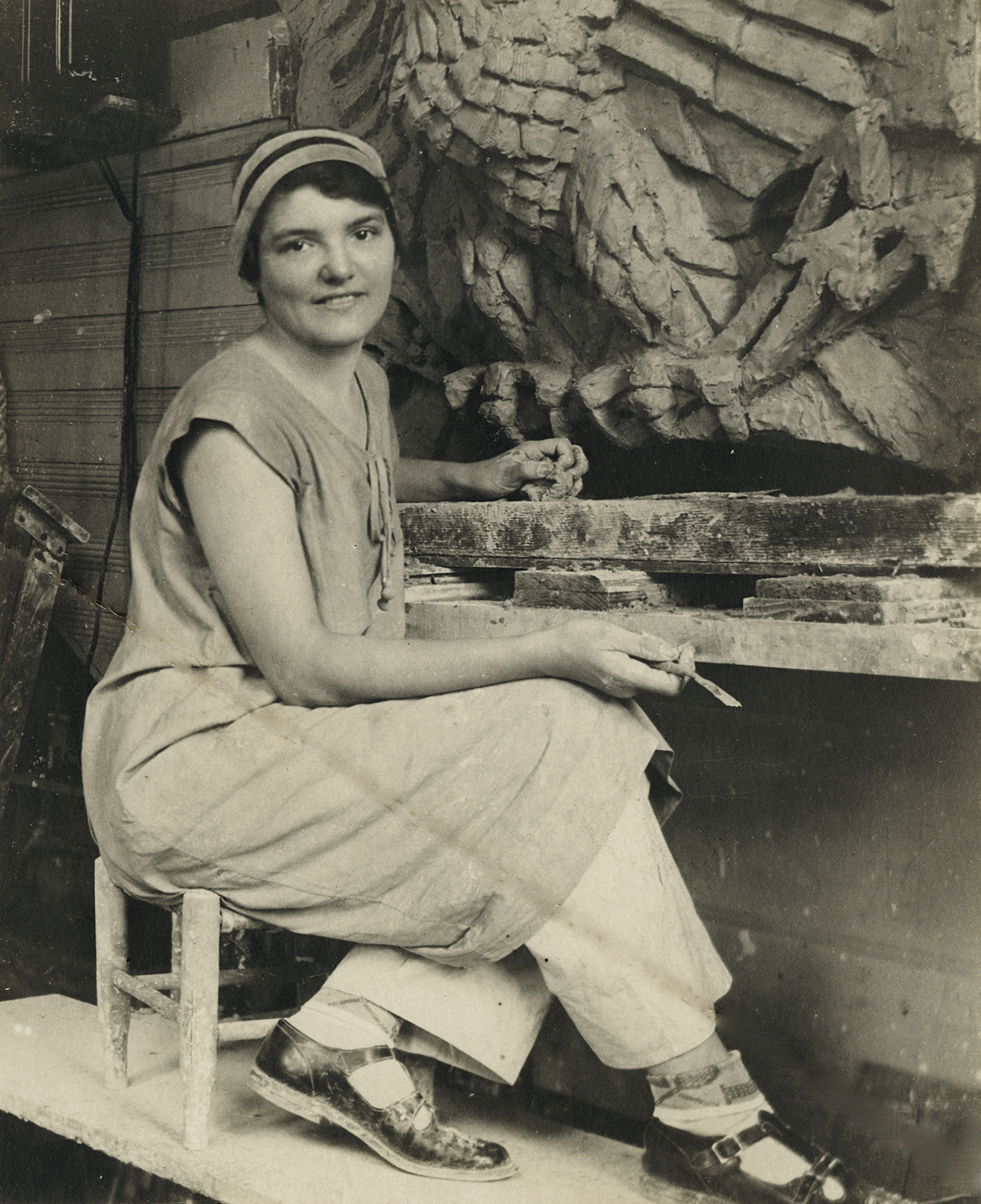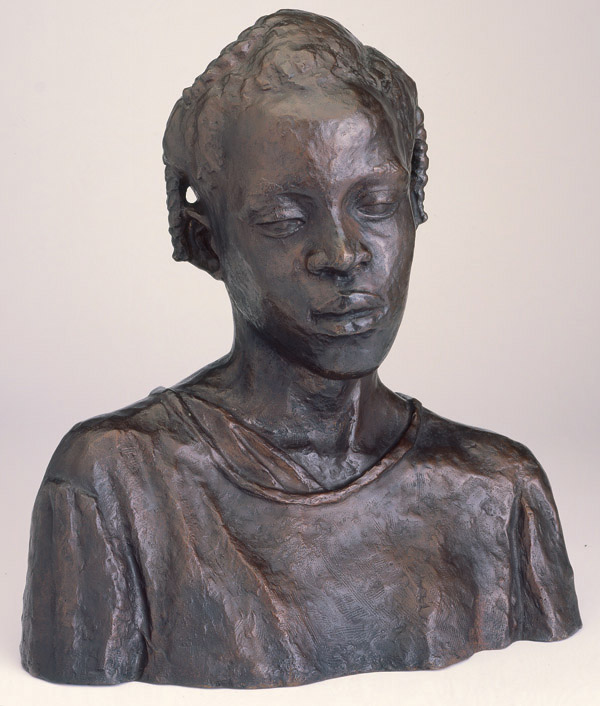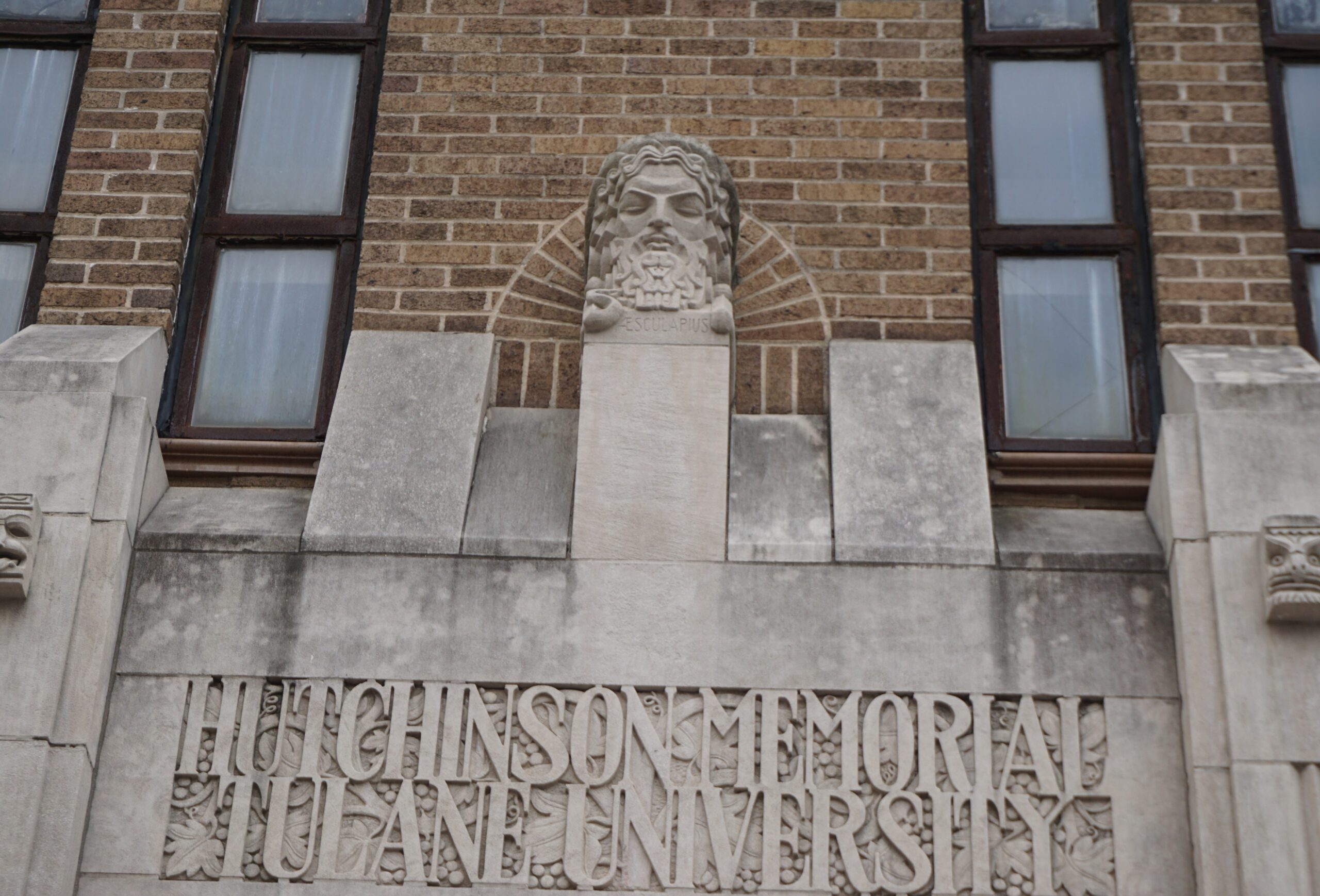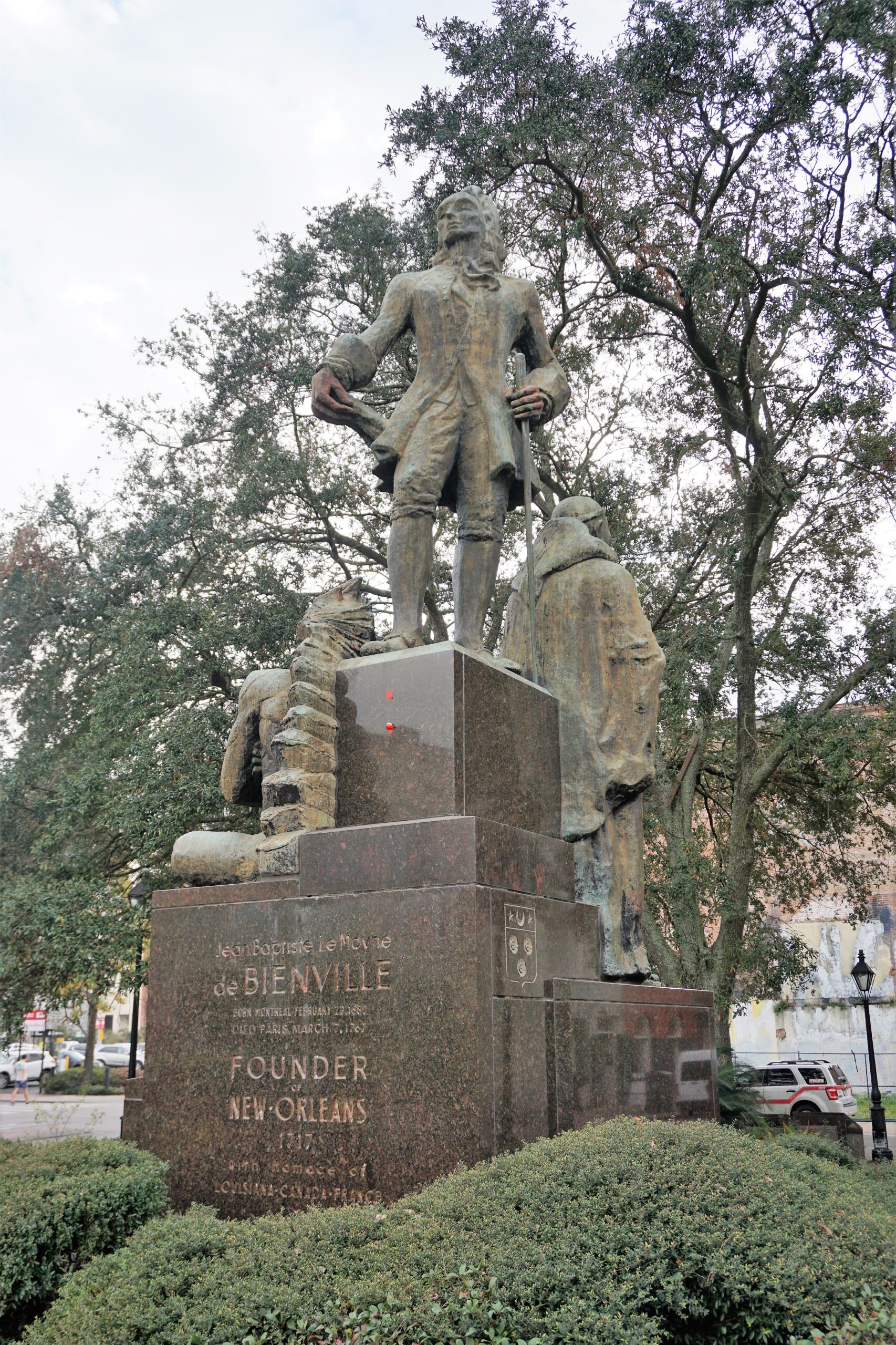Glance up while sipping your cocktail at The Gregory, the restaurant in the historic Watermark Hotel downtown, and you’ll see eight stunning bas-relief panels depicting Louisiana’s evolving economy, natural resources and commerce. The elegant and excruciatingly detailed carvings, as some patrons know, are the work of Angela Gregory, the pioneering early 20th century artist for whom the eatery is named. Gregory was a native Louisianan who broke new ground for female artists, traveling to France as a young woman in 1926 to pursue formal instruction in stone carving, which she had pinpointed as her life’s passion at an early age.

Now is a great time to learn more about Gregory. This week, Louisiana Public Broadcasting released an original documentary about her life and work, Angela Gregory: A Legacy Chiseled in Stone, which premiered Monday, August 22, and will be rebroadcast Friday, August 26. It’s also available for streaming on YouTube. Coincidentally, an expanded exhibition of her work, Angela Gregory: Doyenne of Louisiana Sculpture, is also on display at the West Baton Rouge Museum in Port Allen.
“I heard people talk about her, and her name often came up, but I had no idea the magnitude of her work,” says LPB Senior Producer Dorothy Kendrick, who created the documentary.
|
|
|
Kendrick’s original intention was to produce a show about Gregory for her LPB series, Art Rocks!, but after meeting with Baton Rouge-based Gregory historian Susan Hymel, and visiting Gregory’s work and plowing through some of her archives at Tulane University, she realized a larger story needed to be told.

“It was pretty clear that it needed to be a documentary,” Kendrick says.
Gregory had both purpose and guts, the documentary shows, forging a path to become a sculptor when the art world was dominated by men. The New Orleans native headed for Paris at age 23 in the mid-1920s, having landed a scholarship to study advertising art at the Paris branch of the Parsons School of Design. But Gregory’s primary motivation for being in France was to learn to carve stone. Without hesitation, she approached influential sculpture Antoine Bourdelle, who had trained under Auguste Rodin, about taking her on as a student. Bourdelle agreed, and for the next two years, Gregory studied sculpture under the internationally recognized master. (Bourdelle’s most famous work, the massive and moving bronze Hercules the Archer, is permanently installed at the New Orleans Museum of Art’s Bestoff Sculpture Garden.)
After Paris, Gregory returned home to New Orleans and set up a studio on Pine Street that became a lively meeting place. Over the course of her significant career, she had several commissions, including eight of the 22 panels depicting historic figures on the exterior of the Louisiana State Capitol, the Plantation Madonna—one of several sculptures depicting African Americans—and the bust of Asclepius, Greek god of medicine, on the exterior of Tulane University Hospital. She also created the statues of Bienville outside the French Quarter and Confederate Brigadier General Henry Watkins Allen in Port Allen. The two pieces were recently the subject of controversy for Bienville’s treatment of indigenous peoples and Allen’s role as a slave owner.
Gregory’s work in the Watermark was commissioned by the the historic building’s first occupant, the Louisiana National Bank, in the late 1940s. She was asked to create a series of panels depicting how banking supported the state’s growing economy. Richly detailed and marked by WPA-style images, panels are located in the overlook between the first and second floors and are visible from The Gregory.
After becoming a well-known architectural sculptor whose personal friends included both Joseph Campbell and Kirk Douglas, Gregory spent her later years teaching at then Dominican College in New Orleans, today Dominican High.

The LPB documentary includes interviews with Susan Hymel, a Gregory historian who met the artist in 1970 and has worked for several years to preserve her legacy; Elizabeth Chubbuck Weinstein, guest curator for the Gregory exhibit at the West Baton Rouge Museum; Lauren Davis, Museum Curator at Louisiana’s Old State Capitol; and Deborah Luke, sculptor and former student of Angela Gregory.

The West Baton Rouge Museum exhibit features its own collection of Gregory’s work, which has grown over the last decade. It also features pieces on loan from other institutions. The current exhibit will be on display until August 2023, and will be followed by different exhibits on Gregory until 2025.
|
|
|





